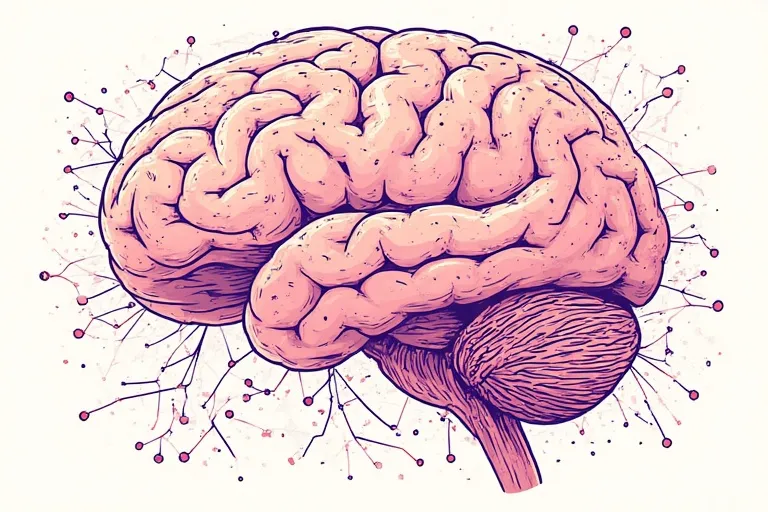Cognitive training is a systematic process aimed at improving and maintaining various aspects of human cognitive activity, such as memory, attention, information processing speed, logical thinking, and problem-solving ability.
Unlike passive acquisition of knowledge, for example, by reading books or watching lectures, this method involves active participation, involvement in special exercises and tasks that force the brain to work in a new, more intense mode.
Thanks to neuroplasticity, the brain can create new neural connections, strengthen existing ones, and compensate for damage by redistributing tasks between different areas.

Effects on the Brain: from Neurons to Structures
In terms of its effect on the brain, cognitive training causes a number of significant changes at the micro and macro levels.
At the level of individual neurons, regular exercise stimulates synaptogenesis, the process of forming new synapses, or connections between neurons, which allows information to be transmitted more efficiently.
In addition, synaptic transmission is enhanced, making existing connections stronger. On a larger scale, there are changes in the volume and density of gray and white matter in key areas responsible for higher cognitive functions.
- For example, training working memory via the Mind Elevate app, which allows you to hold and manipulate information for a short time, often leads to an increase in the density of neural connections in the dorsolateral prefrontal cortex, an area critical for planning and decision-making.
Similarly, attention-building exercises can help strengthen connections in the parietal cortex, which plays a key role in spatial orientation and selective attention.
Different types of cognitive training have their own specific effects on the brain. For example, learning a new musical instrument or a foreign language activates and expands the auditory and linguistic cortex, as well as areas responsible for motor skills, coordination, and memory.
Regular meditation sessions, on the contrary, can lead to thickening of the cortex in areas related to attention, empathy and self-awareness, while reducing activity in the so-called “passive brain mode network”, which is responsible for the wandering of thoughts.
Physical activity, although not directly cognitive training, has a strong indirect effect on the brain, improving blood circulation, stimulating the growth of new neurons in the hippocampus, a key memory center, and promoting the release of neurotrophic factors that support neuron health and survival.
Scientific Research and Transfer Effect
One of the most studied areas is working memory training, often using the so-called n-back test, where the participant needs to remember what happened n steps back.
The statistics obtained during these experiments show that people who regularly perform this test significantly improve their performance in it.
However, one of the main and most controversial issues in this area is the so–called “skill transfer” problem. Many studies show that although exercise can improve performance in a specific task, these improvements do not always extend to other seemingly similar cognitive functions.
For example, a person can become a virtuoso in a computer game for developing attention, but this does not guarantee that he will become more attentive in everyday life, for example, while driving a car.
Advanced Cognitive Training for Independent and Vital Elderly
One of the most famous is the Advanced Cognitive Training for Independent and Vital Elderly study, which involved thousands of elderly people. The participants were divided into three groups: one trained memory, the second trained logical thinking, and the third trained information processing speed.
The results showed that in each of the groups, the participants significantly improved their performance in the area they trained in. More importantly, these improvements were noticeable even 10 years after the end of the training, indicating a long-term positive effect.
- However, the long-range transfer of skills was still limited. The speed-training group showed improvement in everyday tasks that require quick reactions, but not in memory tasks.
Other experiments conducted using functional magnetic resonance imaging (fMRI) have allowed scientists to look inside the brain and see exactly what changes occur during and after training. For example, people who trained their working memory showed a decrease in activity in certain areas of the brain, which may indicate that they began to perform the task more efficiently, using less “mental energy.”
In other cases, on the contrary, there was an increase in activity, which may indicate a wider involvement of neural networks to solve more complex problems.

Examples of Exercises and Games for Cognitive Training
Memory
- n-back test: As mentioned earlier, this is a classic working memory task and it can be adapted for different levels of difficulty.
- The method of Loci: A memorization technique in which you mentally place information in a familiar space, such as your home. To recall information, you mentally “walk” through this space.
- Paired cards: A simple game where you need to find two identical cards lying face down and It perfectly trains short-term memory and attention.
- Memorizing sequences: Examples include memorizing long sequences of numbers or words.
Attention and Concentration
- Stroop test: A simple but effective task where you need to name the color of the word, not the word itself for example, the word “red” is written in blue, but you should say “blue”.
- Puzzles: Crosswords, Sudoku, finding differences in pictures – all these activities require focused attention and perseverance.
- Mindfulness Meditation: Regular practice helps develop the ability to keep your attention focused on the current moment, ignoring distracting thoughts.
Information Processing Speed and Logical Thinking
- Chess and other strategic games: For example, the Mind Elevate app games that require calculating moves and strategic planning effectively develop logical thinking.
- Logical tasks and riddles: Solving puzzles and riddles forces the brain to actively look for non-standard solutions.
- Reaction speed games: Taikun computer games or platformers, where you need to make quick decisions and react to changing conditions, can improve the speed of information processing.
Critics point out that many commercial “brain games” often promise miraculous effects that are not supported by independent scientific evidence. They claim that the often observed improvements are only the result of repeated repetition of the same task and have no relation to the actual improvement of intelligence.
However, proponents of cognitive training retort that, although it is not a panacea, when combined with other factors such as a healthy lifestyle, adequate sleep, balanced diet and social activity, it can become a powerful tool for maintaining cognitive health, especially in old age.
Conclusion: Integrated Approach to Brain Health
As a result, cognitive training is not just a set of puzzles, but a scientifically based method that, using the principle of neuroplasticity, is able to influence the structure and functions of the brain.
Research shows that it can be effective in improving certain cognitive functions, and its positive effects can be long-term. However, in order to achieve maximum results, it is necessary to approach this comprehensively, perceiving it not as a separate “magic pill”, but as part of a broader strategy for maintaining brain health throughout life. Future research will undoubtedly continue to deepen our understanding of exactly how the brain reacts to exercise and how these techniques can be optimized to achieve the best results.



